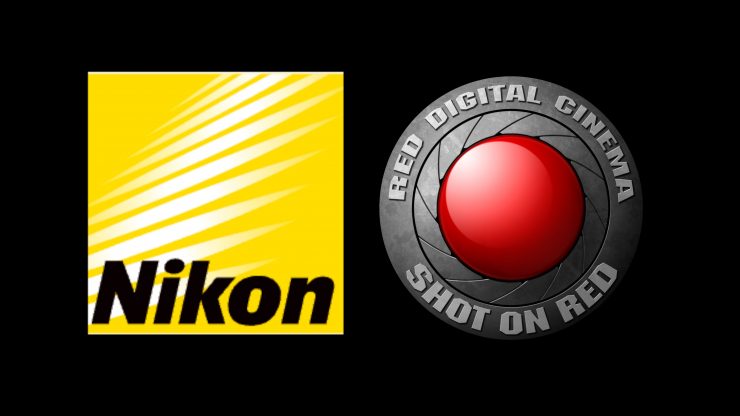Nikon has acquired RED which I don’t think anyone saw coming. I always thought that RED might eventually be sold to another company, but being purchased by Nikon comes as a big shock.
As my friend who owns a KOMODO-X just said, “Do I now own a Nikomodo?”
Here is the full press release from Nikon
Nikon Corporation hereby announces its entry into an agreement to acquire 100% of the outstanding membership interests of RED.com, LLC (RED) whereby RED will become a wholly-owned subsidiary of Nikon, pursuant to a Membership Interest Purchase Agreement with Mr. James Jannard, its founder, and Mr. Jarred Land, its current President, subject to the satisfaction of certain closing conditions thereunder.
Since its establishment in 2005, RED has been at the forefront of digital cinema cameras, introducing industry-defining products such as the original RED ONE 4K to the cutting-edge V-RAPTOR [X] with its proprietary RAW compression technology. RED’s contributions to the film industry have not only earned it an Academy Award but have also made it the camera of choice for numerous Hollywood productions, celebrated by directors and cinematographers worldwide for its commitment to innovation and image quality optimized for the highest levels of filmmaking and video production.
This agreement was reached as a result of the mutual desires of Nikon and RED to meet the customers’ needs and offer exceptional user experiences that exceed expectations, merging the strengths of both companies. Nikon’s expertise in product development, exceptional reliability, and know-how in image processing, as well as optical technology and user interface along with RED’s knowledge in cinema cameras, including unique image compression technology and color science, will enable the development of distinctive products in the professional digital cinema camera market.
Nikon will leverage this acquisition to expand the fast-growing professional digital cinema camera market, building on both companies’ business foundations and networks, promising an exciting future of product development that will continue to push the boundaries of what is possible in film and video production.
Below is the press release issued by RED
RED Digital Cinema Announces it will be Acquired by Nikon Corporation
HOLLYWOOD (March 6, 2024) – In a landmark move, RED Digital Cinema (RED.com, LLC), is excited to announce it will be acquired by Nikon Corporation (Nikon). The agreement with Nikon, reached with RED’s Founder Jim Jannard and President Jarred Land, signifies a new era of innovation and excellence in the professional filmmaking sector.
This strategic partnership brings together Nikon’s extensive history and expertise in product development, know-how in image processing, as well as optical technology and user interface, with RED’s revolutionary digital cinema cameras and award-winning technologies.
For over 17 years, RED has been at the forefront of digital cinema, introducing industry-defining products such as the original RED ONE 4K to the cutting-edge 8K V-RAPTOR X, all powered by RED’s proprietary REDCODE RAW compression. RED’s contributions to the film industry earned a Scientific and Technical Academy Award®, and their cameras have been used on Oscar®-winning films. RED is the choice for numerous Hollywood productions and is celebrated by directors and cinematographers worldwide for its commitment to innovation and image quality optimized for the highest levels of filmmaking, documentaries, commercials and video production.
This acquisition marks a significant milestone for Nikon, melding its rich heritage in professional and consumer imaging with RED’s innovative prowess. Together, Nikon and RED are poised to redefine the professional digital cinema camera market, promising an exciting future of product development that will continue to push the boundaries of what is possible in film and video production.
Stay tuned for more updates as Nikon and RED embark on this exciting journey to shape the future of cinema technology.
Overview of RED.com, LLC
| Company name | RED.com, LLC |
|---|---|
| Head office location | Foothill Ranch, California, U.S.A. |
| Representatives | Jarred Land, President |
| Foundation | 2005 (Establishment) |
| Number of employees | Approximately 220 |
| Business | Design, development, manufacture, sales, and provision of services of professional digital cinema cameras |
What happened to the bad blood?
It wasn’t that long ago where RED was taking legal action against Nikon for implementing compressed RAW codecs in its Z9.
The lawsuit stated several allegations of the use of REDs patent. Below were the main concerns.
29. RED is informed and believes and thereupon alleges that Nikon makes, uses, imports, offers to sell, and/or sells in the United States, and in this judicial district, cameras under the Nikon brand that infringe each of the asserted patents.
30. RED is informed and believes and thereupon alleges that Nikon’s infringing video cameras (the “accused products”) include, but are not limited to, “Z Series Mirrorless Cameras” such as “Nikon Z 9 with Firmware 2.0.”
TicoRAW
The Z9 uses a high-efficiency RAW codec for stills that comes from intoPIX. intoPIX also makes a video version of this same RAW codec called TicoRAW. One of the options available is IPX-TicoRAW-8K (up to 8192-pixels width). This is available in 12-bit and up to 60fps. This is what Nikon is using in the Z9 with 2.0 firmware.
Here is what intoPIX officially said in December last year:
The new Z 9 camera offers High-Efficiency RAW recording up to 8K and 60fps (available through the 2022 firmware update), preserving all the benefits of the RAW format while ensuring very low power processing and very fast transfer speed.
With TicoRAW, the full quality of the captured sensor data is preserved while reducing the bandwidth and the storage needs. It can be used for both Still pictures and RAW movies. This patented technology offers high image quality, and the capability to manage very high resolutions, high frame rates, and high dynamic range workflows. TicoRAW is the world’s first RAW codec that can offer compression efficiency with such low complexity. It also has the advantage of retaining this very fast format for editing, regardless of resolution and/or frame rates used.
The filing sought damages and or royalties for the alleged infringement and an injunction barring Nikon from further infringement. The plaintiff also seeks an award of attorneys’ fees. Nikon can either fight it out in a costly court battle or remove the new feature from the Z9 2.0 firmware update. One issue is that the update has been available since April 20th, 2022 making the removal process practically impossible.
This lawsuit was eventually dismissed in April 2023. Now, we have no idea what actually happened, but here is the dismissal:
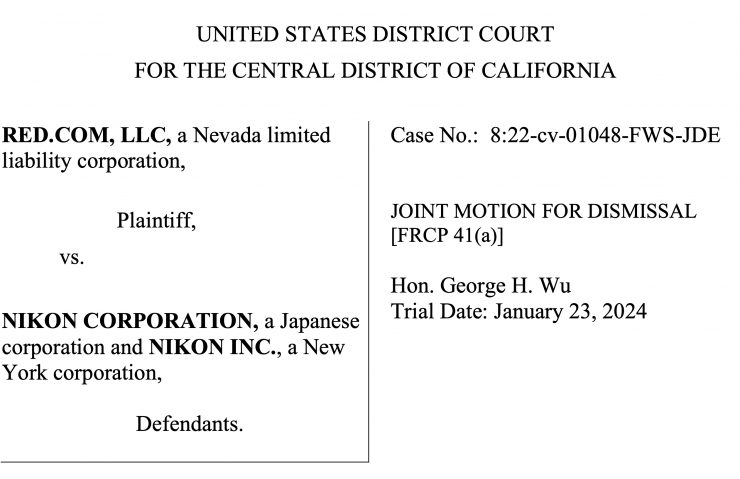
Plaintiff Red.com, LLC and Defendants Nikon Corporation and Nikon Inc. hereby stipulate and move pursuant to this joint motion, under Federal Rule of Civil Procedure 41(a)(1)(ii), that this action be dismissed without prejudice as to all claims, counterclaims, causes of action, defenses, and parties, with each party bearing their own attorney’s fees and costs.
A case dismissed with prejudice is completely finished and it can’t be brought back to court again. A case dismissed without prejudice means the exact opposite. Essentially it can be tried again.
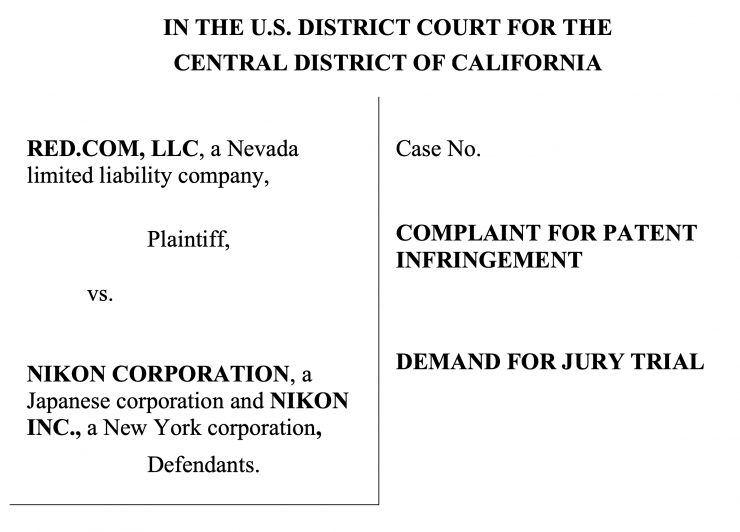
The lawsuit never made it to a jury trial.
Essentially neither side won, as a joint motion from both Red and Nikon was filed to dismiss the lawsuit. What that means is anyone’s guess. Nikon may have settled out of court, Red and Nikon may have both got to a point where neither party was confident of winning, or Red possibly felt that because Nikon doesn’t make digital cinema cameras, it wasn’t going to hurt them directly. This is all just speculation and the only ones who know for sure are Red and Nikon.
Nikon never released any statement, nor did they issue any type of firmware update that removes internal RAW recording from the Z9.
What is interesting is that just one week prior to the dismissal a joint stipulated motion to extend discovery deadlines and extend the jury trial date was denied by the court.
What does this mean for Nikon?
This is a bold and strategic move from Nikon and in a lot of ways it makes sense. The digital stills market has been greatly affected by the continued improvement in smartphone camera technology and Nikon arguably needed to look into other avenues of growth.
Nikon now presumably owns all of the RED patents, including RED RAW, and they could use that in their cameras if they wanted to.
As they don’t make any digital cinema cameras, the acquisition of RED appears to be a good move. I would imagine that RED will probably still operate as RED, but we will have to see what happens going forward. This firmly puts Nikon right into the game as a cinema company.
It will also be interesting to see if Nikon will now start making cinema glass., or even AF cinema glass that could be used with RED cameras.
Nikon has also been using Sony sensors in their cameras, so it will be interesting to see if that changes going forward.
What does this mean for RED?
Ultimately you are being purchased by a lot larger entity with considerably more capital and money to invest. Nikon has around 20,000 employees around the world, while RED only has around 220. Nikon’s revenue for 2023 was around 1.3 billion USD.
I would imagine that RED will continue to operate as RED, and it isn’t suddenly going to be the Nikon V-Raptor. It makes sense for Nikon to keep the RED name and entity as is.
RED will get to utilize all of Nikon’s resources including its lens technology, AF systems, etc. I would imagine that we will see RED cameras being announced in the future that will have considerably better AF performance and capabilities.
Nikon also gets access to RED’s engineers, programmers, sensor design teams, etc. Nikon has large factories and that will ultimately help with RED’s manufacturing capabilities.
Would could also ultimately end up seeing a RED mirrorless hybrid camera of some kind, or a high end digital cinema camera that can also function. as a high end stills camera.
What does this mean for Canon?
That is a good question! RED has being using the Canon RF mount for its cameras for the last few years and it is probably pretty safe to assume that some deal was struck between RED and Canon where Canon could use compressed RAW recording in its cameras in exchange for RED getting to use the RF mount.
Now what that means for Canon going forward will be interesting to see. I would imagine all new RED cameras going forward will potentially come with a Nikon Z mount.
What does this mean for compressed RAW?
That’s the million dollar question. Nikon now owns the RED patents (unless some other agreement was reached) and whether they choose to license that technology out to other camera companies remains to be seen.
Nikon has made film & video cameras in the past
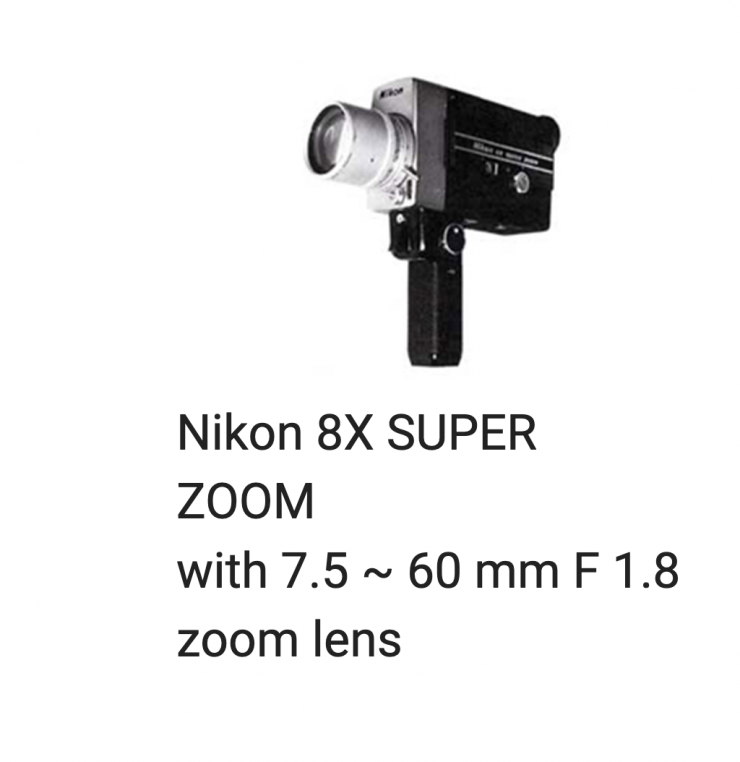
Nikon isn’t a complete stranger when it comes to film cameras, as they did actually make 8mm and Super 8 cameras back in the 1960s.

In 1973 they also announced the Nikon “R10 SUPER ZOOM” and Nikon “R8 SUPER ZOOM”. Both were intended to be high-grade models targeting advanced amateurs with such features as fast zoom lens with high magnification, macro mechanism covering full range, reverse shooting, variable shutter opening angle, and so on. They were welcomed by high-level amateur movie makers and sold well.
Nippon Kogaku completely gave up the movie camera business in 1979 due to the arrival of video cameras. However, in June 1982, they released a “Color Video Camera S-100” together with “Portable Video Recorder SV-100” and “Video Tuner ST-100”.
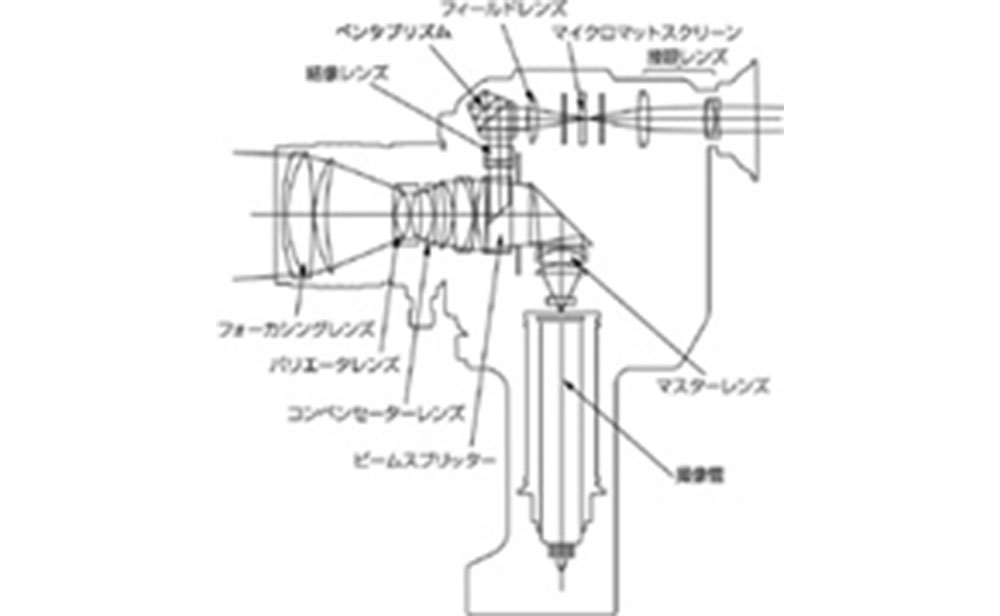
Image credit: Nikon
Video camera system at that time consisted of a separate camera and portable video deck, and the deck carried over the shoulder and the camera held by hand were connected by a cable.
The Nikon home video camera system was developed in a large scale, but it didn’t sell well.
What are your thoughts on this acquisition. Let us know in the comment section below.

Laura Adams is a tech enthusiast residing in the UK. Her articles cover the latest technological innovations, from AI to consumer gadgets, providing readers with a glimpse into the future of technology.

